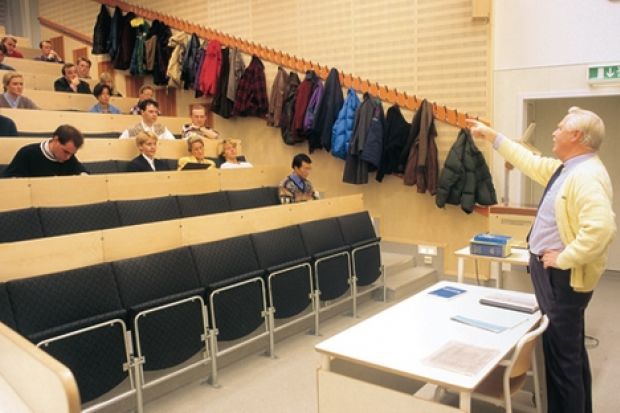English universities could face a drop in undergraduate applications of between 6 and 8 per cent as a result of next year's increase in tuition fees, new modelling suggests.
The study at the University of Leicester indicates that higher fees produce a "flight to quality" that will put particular pressure on post-1992 universities.
Depending on the impact of bursary packages, the model predicts that the decline in applications could be as low as 4 per cent or as high as 10 per cent, according to Richard Taylor, director of corporate affairs and planning at Leicester, who led the research.
In January this year, Mr Taylor surveyed 700 UK student applicants, asking them to which of various combinations of 16 different universities, subjects, fee levels and bursary schemes they would "aspire". The data were then used to create a model that compared the universities they would choose, both before and after the fee increase.
The modelling has now been run again using the actual fees set by universities. This suggests that when higher fees are introduced, the number of applicants who "aspire" to study at new universities will fall dramatically.
All of the post-1992s used in the model saw the number of applicants choosing them fall by more than 50 per cent, with one, which has set fees at £8,000, losing 70 per cent.
Mr Taylor said: "Some are assuming that as fees rise by similar amounts (across the sector), student applicant patterns will stay the same. What this research shows is that there will be a new pattern."
One way for students to "mitigate the risk" of higher fees was to "choose a brand that employers recognise", he said. "They will aspire to universities with what they perceive are the strongest reputations. Post-1992s in particular are going to come under pressure as people try to mitigate their risk."
Mr Taylor stressed that his study was only a "model of aspiration", and applicants may not get the grades to go to their preferred institution, or there would not be enough places available.
The 1994 Group performed better than the post-1992 universities in the study, while those in the Russell Group did better still.
Yet there was significant variation within the mission groups: one 1994 Group member saw the number of "aspiring" applicants rise by 13 per cent, while another had them fall by 48 per cent.
The study is the latest attempt to forecast the impact of the fee change. A report last week by the London School of Economics' Centre for the Economics of Education predicted that university enrolment could fall by at least 5 per cent after fees.
However, a report published by the Higher Education Funding Council for England in July suggested a lower figure, predicting an average of around 2 per cent.
